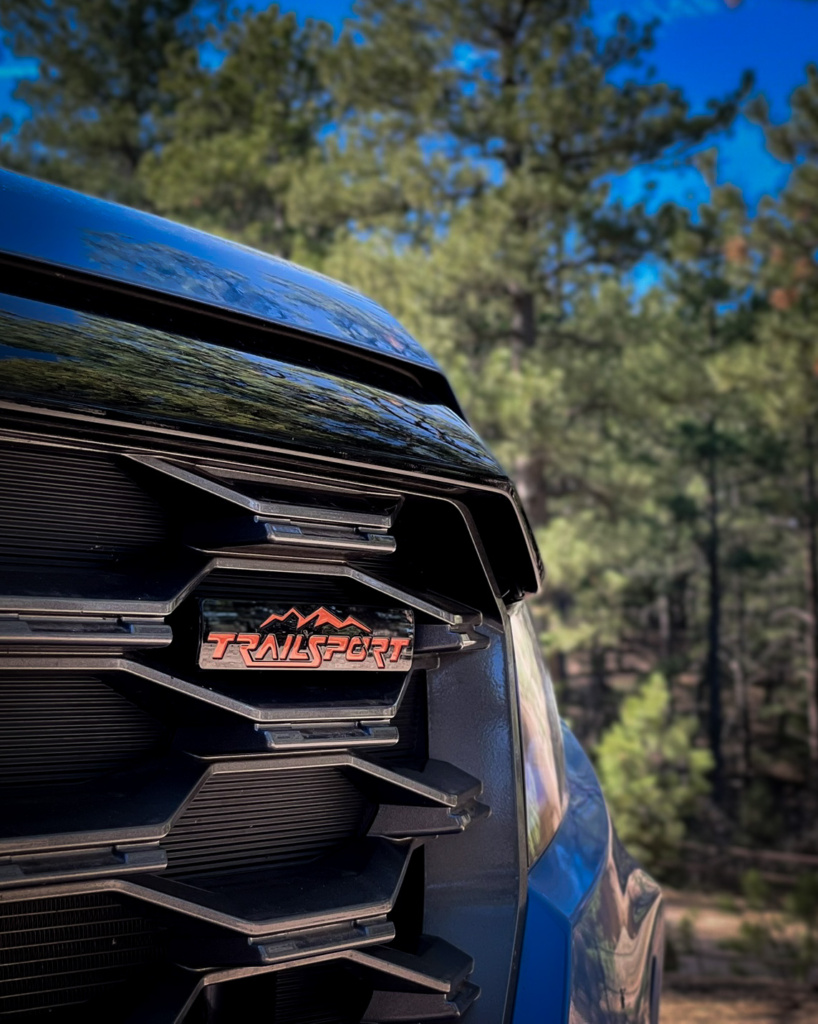
Entering its eighth year, the Honda Ridgeline continues to impress with its practicality and overall handling performance. The recent addition of the TrailSport trim adds to the truck’s adventurous spirit with its off-road-minded and value-focused feature upgrades.
The Ridgeline’s most recent refresh sees a host of styling updates such as a larger and more upright grille, a reshaped front fascia, and rear bumper cutouts that fit dual exhaust outlets. They go a long way to help the truck look more brawny than before; however, several traditional “truck shape” attributes, such as a more steeply sloped windshield angle and an extended dash-to-axle distance, will remain until the next generation… whenever that might be.
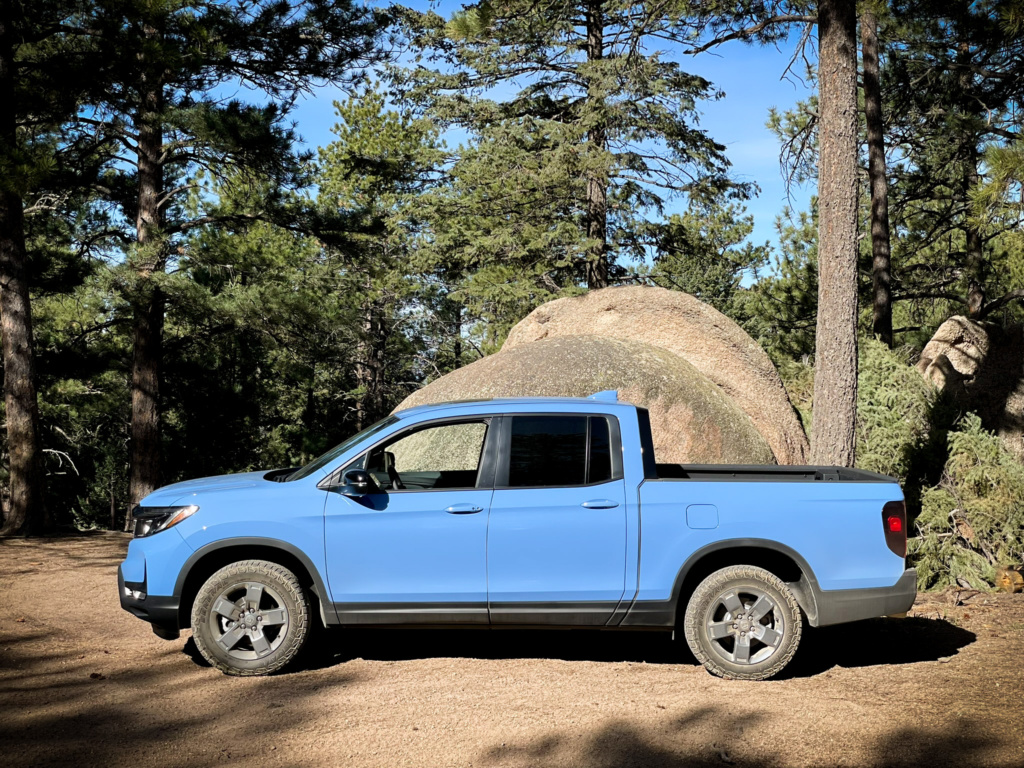
Going beyond styling, the Ridgeline continues to adhere to its customers’ needs instead of the traditional industry norms. Since its creation, the frame has been integrated structurally with the body, rather than the typical truck design, where they are treated as two separate structures.

There are many advantages of this design, and the one most enjoyed is the Ridgeline’s ride quality. Essentially, the entire structure works together to control the imposed forces, enabling the Ridgeline with a confident turn-in, sustained composure over mid-turn bumps, and fewer moments of head tossing when traversing over staggered bumps. Even my TrailSport test model’s off-road tuned dampers and all-terrain tires couldn’t disrupt its sense of agility and refined on-road manners. At highway speeds, general road noise is noticeable but not objectionable, while wind noise is well-managed.

One of the monocoque chassis’s many practical advantages is the more shape-able construction, which affords the integration of clever packaging, such as a large (and lockable) cargo space under the bed floor. Its neatly shaped area can easily swallow a Costco-size pack of paper towels, it can serve as a secure (and dry) space for luggage, and includes a drain plug so it can even act as a cooler.
The Ridgeline’s standard dual-action tailgate provides swing-out capability that makes loading and unloading items from the in-bed trunk (and the bed itself) far more back-friendly.
And because of its relatively light weight and smartly designed top tailgate trim/ hand-grip, one won’t miss the additional complexity, expense, or heft of the competition’s multi-function tailgates.
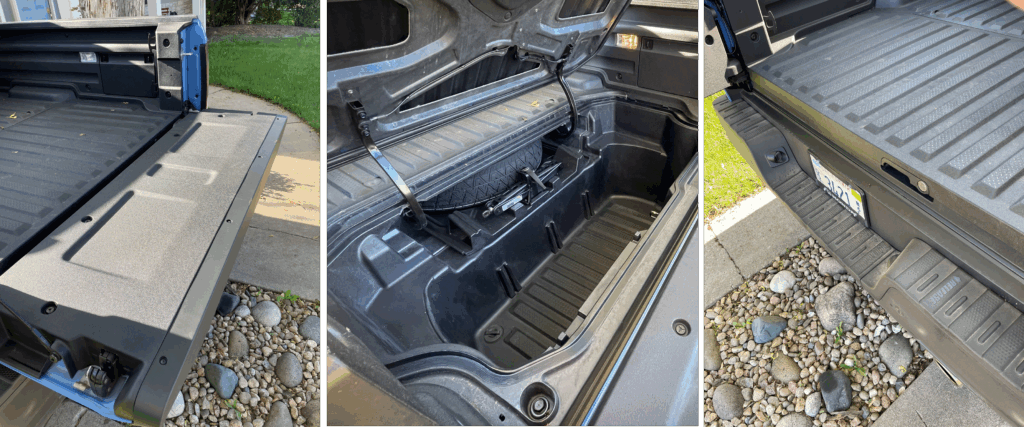
The cargo bed easily fits a 4’x8′ sheet of plywood, a pair of dirtbikes, or an ATV. Its payload capacity is about 1,500 lbs, or double the weight of a Honda Rubicon ATV. The Ridgeline is also standard with a 5,000-pound towing capacity, which is entirely sufficient for weekend adventure trailers and for hauling side-by-sides.

Hauling performance is in the hands of the venerable 3.5-liter V6 and a Honda-designed 9-speed transmission. Enthusiasts will appreciate the engine’s strong mid-range grunt and pleasing pull through the detectable VTEC cam shift at (about) 5,000 rpm and on toward red line. The transmission, however, is frustratingly slow to shift from R to D (and vice-versa), slow to engage following an engine restart, and slow at shifting gears in general when in a relative hurry. And when coming back from the mountains, requests for downshifts via the paddle shifters can lead to unpleasant moments of reduced deceleration as the transmission takes its sweet time to lock into the called-upon gear – it is that slow. The transmission’s S Mode is far better programmed and keeps the engine in its ideal power band, eliminating most downshift situations to help keep the transmission from getting in the way of itself.

All Ridgelines are also equipped with Honda’s automatic all-wheel drive system with a torque-vectoring rear differential and terrain-specific traction control programs. All together, it’s incredibly efficient and effective at getting the power to where it’s best and controlling wheel-spin. However, the lack of a rock terrain setting is an acknowledgment of the Ridgeline’s lack of low-range gearing. At least, it’s honest.
With the Ridgeline’s right-sized drivetrain parts, advanced engine efficiency technology, and tuning for real-world use, I found that the pickup (provided by Honda at no expense to Pilgrim Motor Press) easily achieved its EPA-estimated 21 MPG combined. That’s something that can’t necessarily be said for some of its turbocharged competitors.
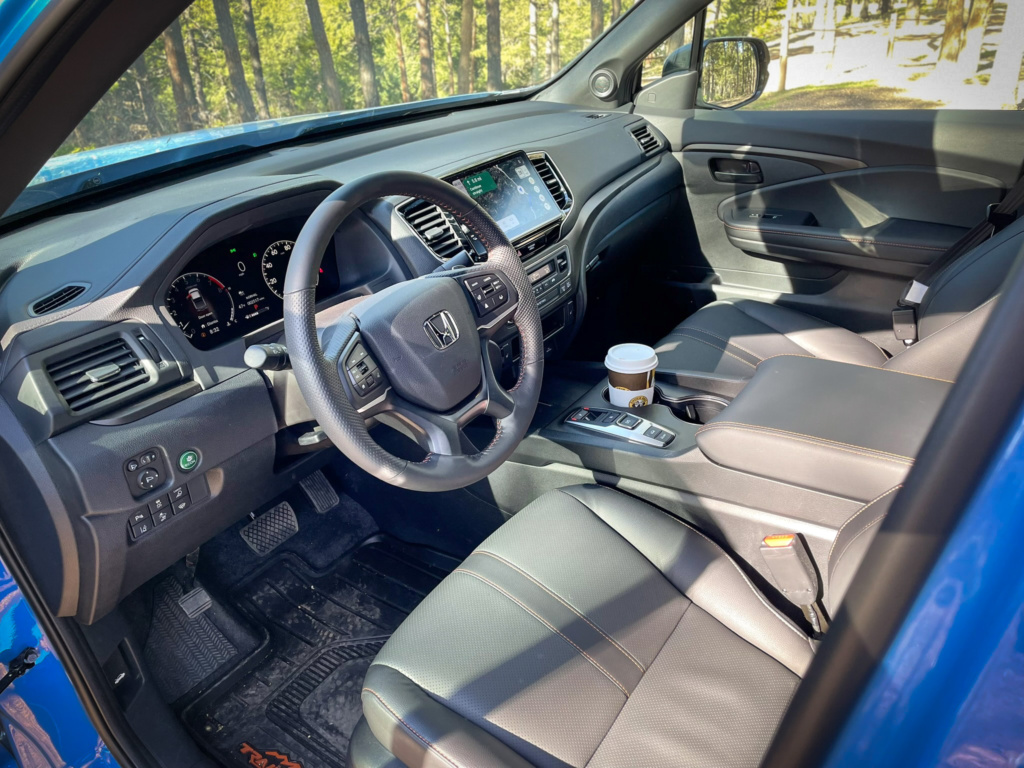
Getting settled in the Ridgeline couldn’t be easier. The floor height is essentially that of a typical crossover, and the seat cushions are largely flat. The steering wheel is nicely shaped and and is laden with crisp no-look controls, the digital gauge cluster offers a familiar layout and various (expected) displays, and the dash layout features a 7-inch infotainment touchscreen with Honda’s latest infotainment system that is easy to use and offers all of the connectivity one might expect, including satellite radio and navigation.

The interior is also fitted with many high-quality physical buttons and rocker switches for HVAC, drive modes, and frequently used creature comfort features. Beyond Honda’s usual clever use of available space, many of the cup holders are capable of holding a 1-liter Nalgene bottle, a rare convenience in a vehicle of any size.
Unfortunately, the back seat offers only as much passenger legroom as other trucks in its class (meaning: it’s not great for adults). At least the near-90-degree opening rear doors, easy one-handed lift-and-lock seat cushions, and flat load floor make the space incredibly useful and easily adaptable.
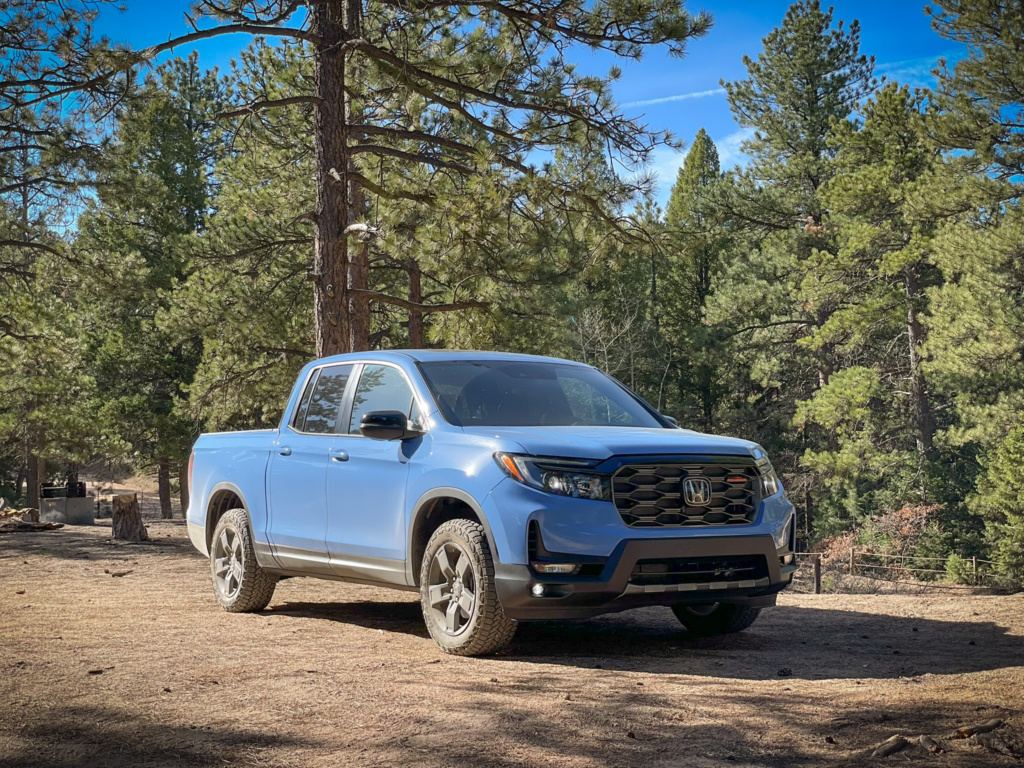
Overall, there is little denying the Ridgeline’s impressive expanse of usefulness that is ingrained in its design. But add in the fact that it is also fun to drive, and its accomplishments extend well beyond just being practical; rather, they ensure that it is a Honda.
